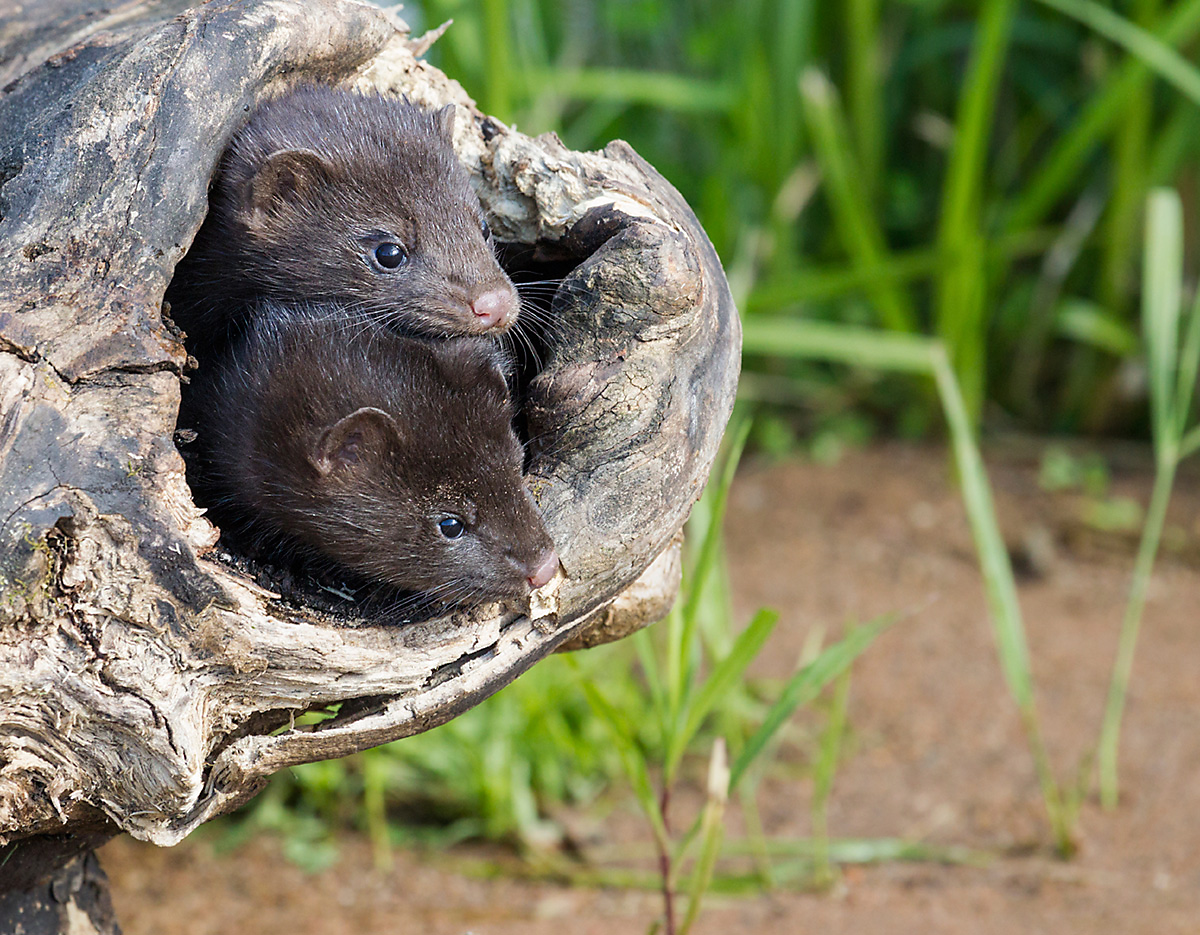





Minks
How to Get Rid of Minks
Minks can spell trouble for homeowners who have fish and koi ponds since these animals are semiaquatic and prefer fish and frogs. Poultry is also commonly targeted by minks, and they can be especially ferocious to ducks and chickens – often killing all the birds in one night. If minks are creating problems for you, there are control options that allow you to get rid of these pest animals without harming them.

1 Eliminate Food and Shelter
Minks are attracted to areas that offer the best options for food and shelter. To reduce their presence in your yard, take steps to eliminate these attractants. While modifying their habitat is not as easy as it is for some pests, here are some methods you can try:
- Reduce cover leading around your chicken coops, koi ponds or other areas you wish to protect from predatory minks.
- Remove potential den sites around your property. Minks use dens that other animals have abandoned. Sealing or removing as many of these potential residences as possible can help reduce their numbers.
- Add motion-detecting lights outside of areas you wish to protect from predation. Minks are stealthy creatures that hunt during the night, so bright lights can send them scurrying.
- Keep outdoor pets such as ducks or rabbits out of reach where they can’t tempt minks to your yard as a potential food source.
2 Identify Areas of Damage

Minks do relatively little property damage to the areas where they hunt, since they often reuse dens abandoned by other animals. Instead, their hunting skill causes the most frustration for humans. For example, they may empty koi ponds of all their fish over the course of a few nights. They also will regularly visit poultry farms for easy meals.
Some ways you can identify the presence of minks are:
- Small animal tracks – Minks leave tiny, almost kitten-like tracks. You may see them leading up to where captive animals reside.
- Small animal tracks – Minks leave tiny, almost kitten-like tracks. You may see them leading up to where captive animals reside.
- Uneaten prey – As mentioned above, minks often leave many leftovers behind after a feeding frenzy. In addition, unlike many other animals that haul off and consume the entire prey, minks often just bite the heads off chickens or pierce their throats to drink the blood.
- Other dead wildlife – Have you spotted dead rabbits, mice and snakes around your yard, or perhaps a pond empty of fish? You can often identify mink-killed prey by a wound on the back of the skull. Look for closely spaced pairs of canine teeth marks as evidence of a mink kill.
3 Choose the Right Control Method
Once you've targeted your problem areas, you will be able to choose the control method that's right for you. Combine multiple methods of control to increase your chances of successfully getting rid of minks and keeping their damage to a minimum.
Live Traps

Trapping is one of the most effective methods of control for minks. In addition, live traps allow you to capture your pest animal without harming them so you can relocate the mink far away from your property. Minks can often be suspicious of new objects, so live traps can be difficult if not properly placed and baited.
- Place a two-door trap along typical mink paths, such as along chicken coops or in dirt banks. This method is most effective in travel lanes where they cannot go around the trap and instead must enter it.
- Always make sure to place fresh bait inside your trap to lure them in – fresh fish, muskrat carcass, bloody chicken and frogs are great options.
Electronic Repellents

Electronic repellents are another great option for mink control. Minks have a relatively weak sense of smell compared to their other abilities, so traditional scent-based deterrents aren’t as effective. However, electronic repellents use motion detection to frighten animals away with sudden bursts of water. These repellents are chemical free and can be used to protect:
- Koi ponds
- Animal cages
- Chicken coops
- Birdhouses
- Entryways
- Other livestock structures
The use of electronic repellents alone may not be ideal for permanent mink removal, but they are great when paired with other control methods.
Shop Electronic Repellents »Exclusion

Make it difficult for minks to enter poultry barns and chicken coups by securing all access points that minks could potentially exploit. Minks will rarely chase down chickens, but rather corner them or attack them while the bird is sleeping, so nighttime security is a must.
- Close off large openings with metal flashing, since minks are able to claw and chew through soft wood.
- Place chicken wire with holes no larger than 1 inch over ventilation openings in poultry yards and chicken coops.
- Seal even the smallest holes and cracks with caulk or expanding foam. You may also want to stuff these gaps with steel wool for extra protection. Minks won’t try to chew through for long.
Tip: Minks can fit through impossibly small openings and often use paths created by mice and rats to enter coops. Seal any gap larger than 1 inch for best results.
